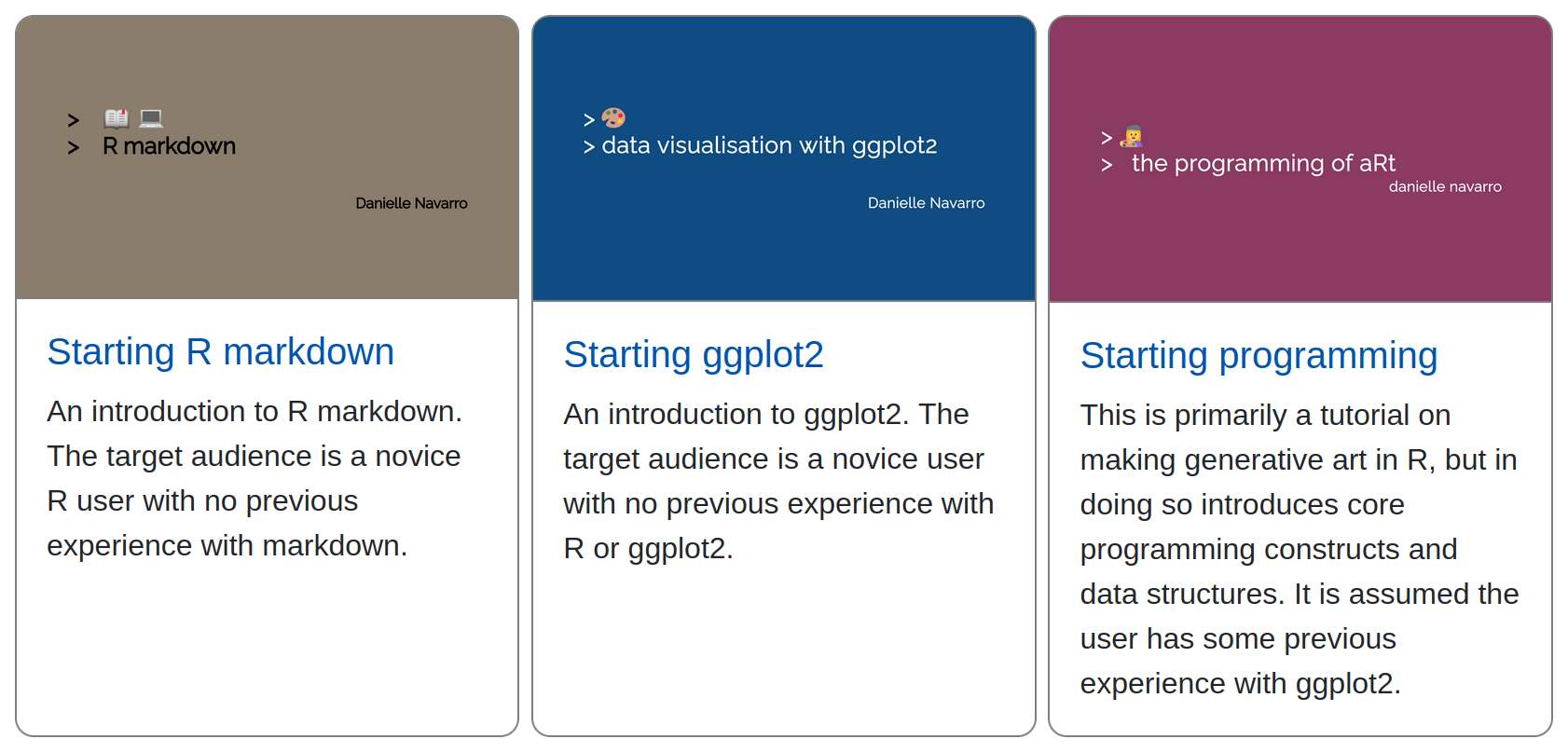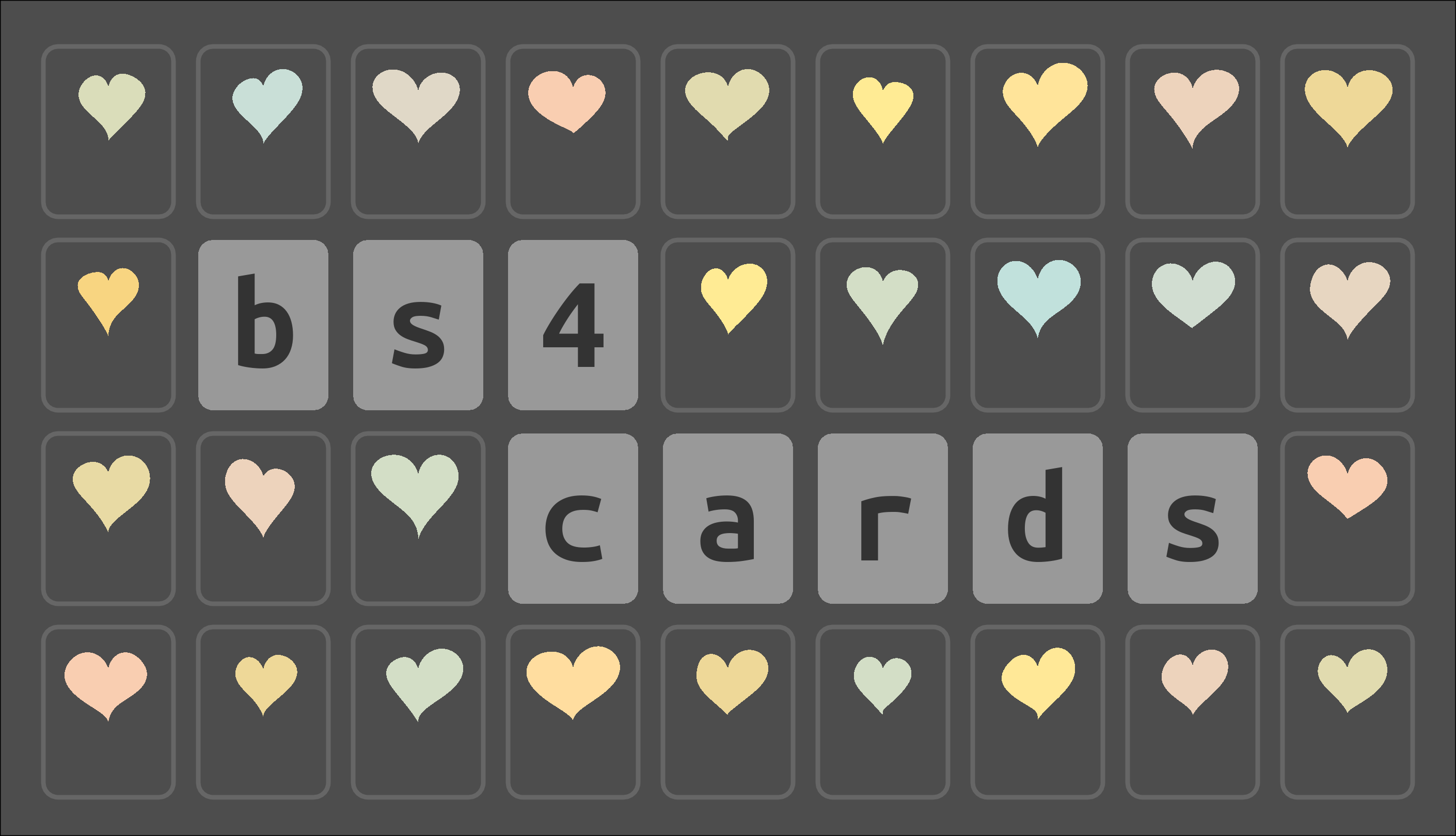
The hardware and bandwidth for this mirror is donated by METANET, the Webhosting and Full Service-Cloud Provider.
If you wish to report a bug, or if you are interested in having us mirror your free-software or open-source project, please feel free to contact us at mirror[@]metanet.ch.
When creating R markdown websites, I often find myself wanting to organise content into a nice-looking grid of links with thumbnail images and maybe a small amount of text. It’s a design pattern I use over and over again in my own sites. Whether I’m creating previews for lectures, profiles and bios for people, or links to galleries, I find myself needing the ability to create content that looks something like this:
 In my
ideal world, I’d store the information in a data frame called
In my
ideal world, I’d store the information in a data frame called
slides (or whatever) that has one row per card and columns
specifying the relevant information, and would then be able to build the
card with a command like this:
slides %>%
cards(
title = messy_title,
text = description,
link = link_url,
image = path_to_image
)where title = messy_title means that the card title
should be set using the messy_title variable in the
slides data frame, and so on.
Of course, having made quite a few sites that need this kind of
thing, I’ve found that the specific layout I need for the cards varies
from case to case. Sometimes I want the text under the image (as in the
example above), other times I want the text to appear to one side, and
other times I want the text to float over the image. So I’d want to have
a layout argument that could switch between different
layout formats, and probably a lot of other customisation options
too.
Realising that I’m certain to make many more sites that need this functionality (and suspecting that I’m not the only one), I wrote bs4cards to make this task a little easier inside. You can install the development version from GitHub with:
# install.packages("devtools")
devtools::install_github("djnavarro/bs4cards")The package exports a single function cards() which
works as described above. It takes a data frame as input and
automatically generates the HTML you need to create a card grid.
Awkwardly, it’s a little tricky to show all the functionality in the README because this page displays on GitHub (as well as the package website) and there’s no bootstrap library underneath the GitHub version… so if you’d like to see some examples of how the package works, check out the get started page!

These binaries (installable software) and packages are in development.
They may not be fully stable and should be used with caution. We make no claims about them.